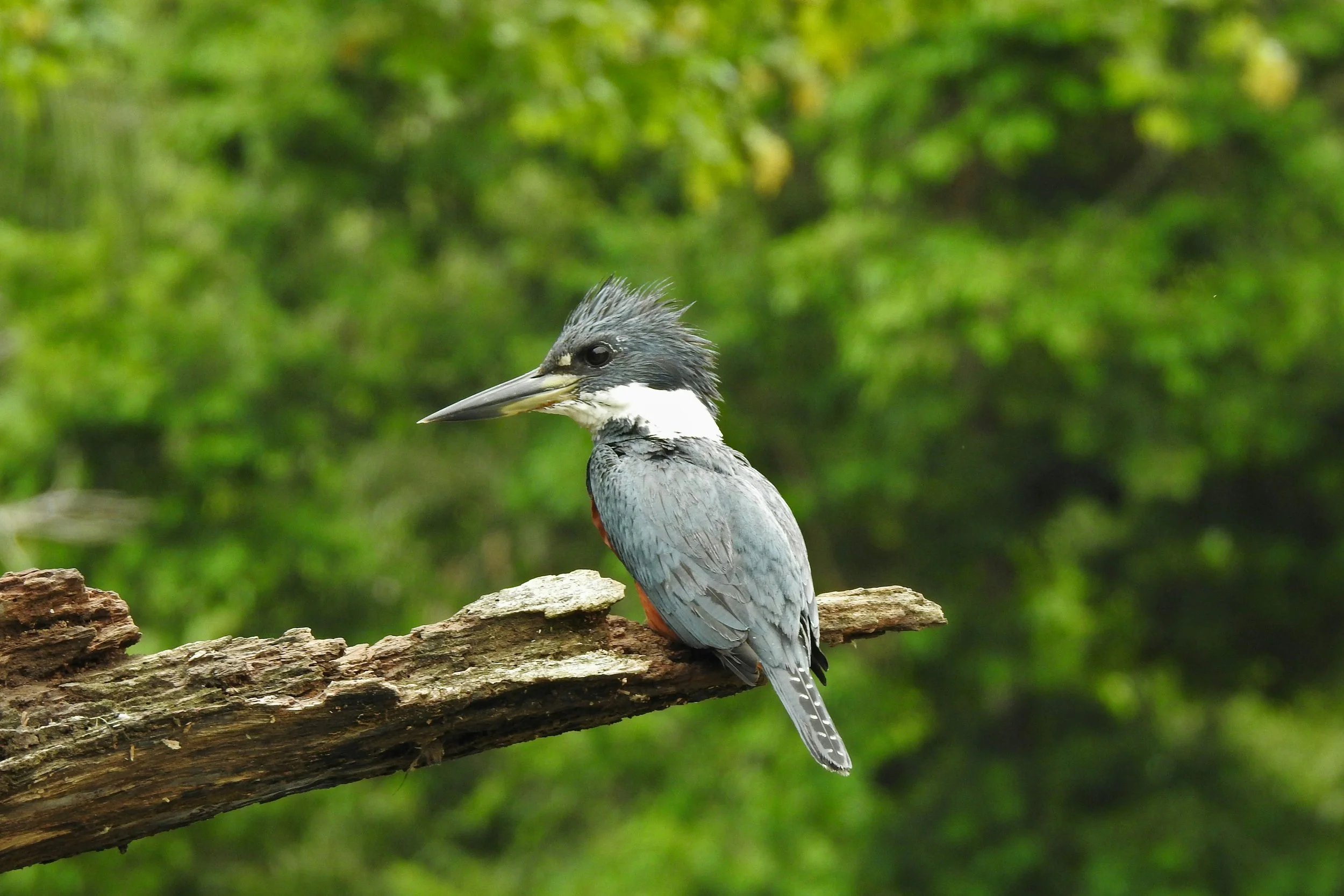
Bird
Unmatched Birding in Costa Rica
-

San Gerardo de Dota
San Gerardo de Dota, nestled in the Talamanca Mountain Range, is a biodiversity hotspot renowned for its exceptional birding opportunities. This high-altitude cloud forest ecosystem, located at approximately 2,200 meters (7,200 feet) above sea level, provides a cool climate and a unique habitat for numerous bird species, including several endemics and near-endemics of the region.
Key Avian Species
Resplendent Quetzal (Pharomachrus mocinno): The star attraction, this vibrant trogon thrives in the oak-dominated cloud forests of San Gerardo. Feeding on the fruits of wild avocados (Lauraceae family), the quetzal plays a crucial role in seed dispersal, making it a keystone species.
Flame-throated Warbler (Oreothlypis gutturalis): This striking warbler is an endemic species restricted to the highlands of Costa Rica and western Panama. Its vibrant plumage and melodious song make it a favorite among birders.
Collared Redstart (Myioborus torquatus): Another highland endemic, this active and charismatic species is often seen foraging in mixed-species flocks.
Black Guan (Chamaepetes unicolor): A large frugivorous bird, the black guan is an important seed disperser in the cloud forest ecosystem.
Best Practices for Birding in San Gerardo de Dota
Morning Activity: Early mornings are the most productive times, as birds are highly active during the cooler hours.
Guided Tours: Local guides bring invaluable knowledge about specific bird habitats and behaviors, enhancing the birding experience.
Optics and Patience: High-quality binoculars or a spotting scope are essential for observing canopy-dwelling species. Patience and quiet observation yield the best results.
-

Tortugeuero National Park
Tortuguero National Park, in northeastern Costa Rica, is a sprawling network of canals, lagoons, and lowland rainforests. This remote area is a haven for wetland and rainforest bird species, many of which are rarely seen elsewhere. access is possible only through small boats: this way the Tortuguero National Park is, a place unlike any other; where small communities still retain their traditions and also enjoy the benefit of having the bicycle as their main transportation method, making the trip a true encounter with Caribbean culture.
Key Avian Species
Agami Heron (Agamia agami): This elusive heron is often found in quiet lagoons, feeding in shaded areas of dense vegetation.
Great Green Macaw (Ara ambiguus): Threatened by habitat loss, this species is a highlight for conservation-minded birders.
Boat-billed Heron (Cochlearius cochlearius): With its oversized bill and nocturnal habits, this unique heron is a fascinating sight along the canals.
Purple Gallinule (Porphyrio martinicus): Easily spotted among floating vegetation, this colorful species is a common resident.
Birding Highlights
Canal Safaris: Quiet boat trips through the park’s canals are essential for spotting elusive species like the Agami Heron.
Dawn and Dusk Activity: Early mornings and late afternoons are ideal for observing wetland birds.
Rainforest Birding: Trails near the village of Tortuguero provide excellent opportunities to see forest species such as toucans and tanagers.
-

Carara National Park
Carara National Park, located near the Pacific Coast of Costa Rica, is a unique ecological crossroads where the dry forests of the north meet the humid rainforests of the south. This transition zone creates an incredibly diverse habitat, making it a hotspot for biodiversity.
Key Avian Species of Carara National Park
Scarlet Macaws: One of the park’s main attractions is its vibrant scarlet macaw population. These majestic birds are often seen in pairs, soaring above the forest canopy or perched on almond trees eating their seeds.
Riverside Wren (Cantorchilus semibadius): A Pacific-slope endemic, this small, active wren is often seen near the forest understory.
Orange-collared Manakin (Manacus aurantiacus): Males perform intricate courtship displays in lekking sites, making them a fascinating subject for birders.
Fiery-billed Aracari (Pteroglossus frantzii): This striking toucan species adds a burst of color to the canopy.
Rainforest Trails: The park features accessible trails for all levels of hikers. The Universal Access Trail is perfect for families, while the Laguna Meándrica Trail offers opportunities to spot water birds like herons and kingfishers.
Other Wildlife: In addition to macaws, visitors may encounter white-faced capuchin monkeys, agoutis, poison dart frogs, and a variety of reptiles.
Carara is an excellent choice for birdwatchers and wildlife enthusiasts due to its proximity to San Jose and the Central Pacific’s main tourist areas, such as Jaco and Manuel Antonio. This can easily be a stopping point on your way to more popular national parks.
-

Caño Negro Wildlife Refuge
Located in the northern region near the border with Nicaragua, Caño Negro Wildlife Refuge is a lush wetland ecosystem that comes alive during the rainy season when the floodplains expand dramatically. It’s one of the most important wetlands in the country and is recognized as a Ramsar site for its ecological significance.
Highlights of Caño Negro Wildlife Refuge
Birdwatching Paradise: Caño Negro is a top destination for birding enthusiasts. Species like the jabiru (the largest stork in the Americas), anhingas, and roseate spoonbills can be spotted here, especially from December to March.
Boat Tours: The most effective way to explore Caño Negro is by boat, which allows access to remote lagoons and a closer look at wading and aquatic birds.
Seasonal Variation: During the dry season (December to April), water recedes, concentrating birds around remaining wetlands. The wet season (May to November) attracts migratory species from North America.
Caño Negro is a peaceful escape, ideal for those seeking a deeper connection with Costa Rica’s wetlands and their rich biodiversity. While less crowded than other destinations, it offers an unforgettable wildlife experience.
